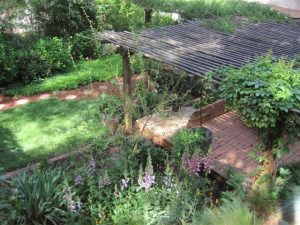Cabin fever, frost, rain, and worn out pages of seed catalogs are the complete picture of the winter gardener. All the articles tell us to get prepared and be ready for planting. Our instincts are telling us to plant, get spring going, and food on the way. In reality, we might be curing manure, building raised beds, and doing yard clean up. Or perhaps we are sitting next to the fire, waiting for several days of consistent warmth outside. How do you know when to step out the door with seedlings in hand to plant?
Gardeners must work backwards. When is it safe to plant in your area? Luckily there is a calculator to give you your area’s frost date. What are frost dates? A frost date is the average date of the first light freeze in fall and the last light freeze in spring. There is a possibility of 50% that there will be a frost after the calculated date. Also topography and local weather may affect the calculation.
Frost dates are a great guideline to help gardeners from jumping out too soon with tender plants. There are three classifications of freeze temperatures and they are based on how that temperature affects plants. A light freeze is 29 degrees to 32 degrees Fahrenheit, and those temperatures will kill tender plants. A moderate freeze is 25 degrees to 28 degrees, and is widely destructive to most vegetation. A severe freeze is 24 degrees and colder. A severe freeze creates heavy damage to most plants. Knowing the light freeze date will give your plants a better chance of surviving, and the gardener a quick way out of the gate.
Knowing the length of the growing season is important in order to plan. Yes, we do need to know a date to plant but there are other uses. If your growing season is short you might want to skip the monster pumpkin if you are starting late. If you want to plant a second planting of tomatoes to enjoy tomatoes in January then you need to back up from the fall frost date. Most seed and plant labels will give a time element to maturity and harvest. If the potential first frost date in the fall is November 6th and you want a second crop of celebrity tomatoes with a 70-80 day harvest schedule then put the seedlings in at the half way point of your growing season. Celebrity tomatoes are determinate, with smaller, bushier plants. They are the opposite of vining tomatoes that keep producing tomatoes on ever growing stems. So, the second crop will have strong, new growth and determination to fruit way into fall.
To be prepared for a successful spring, keep the following tasks in mind: clean up in preparation for planting, prepare your tools, give your soil some TLC, create a plan, and next spring maintain your hard work. Always know your region, but be prepared to be pleasantly surprised. Water wisely, and try to be patient.
While you are planning that spring garden remember there are really never too many tomatoes, zucchini, or cucumbers. Relatives, neighbors, fellow workers, and the food bank will joyfully enjoy your bounty and hard work. Always plant an extra row for those that cannot.
Julie Silva is a University of California Cooperative Extension Master Gardener of Tuolumne County.
UCCE Master Gardeners of Tuolumne and Calaveras Counties can answer home gardening questions. Call 209-533-5912 or go to: http://ucanr.edu/survey/survey.cfm?surveynumber=7269 to fill out our easy-to-use problem questionnaire. Check out our website at: http://cecentralsierra.ucanr.edu/Master_Gardeners/ You can also find us on Facebook.


